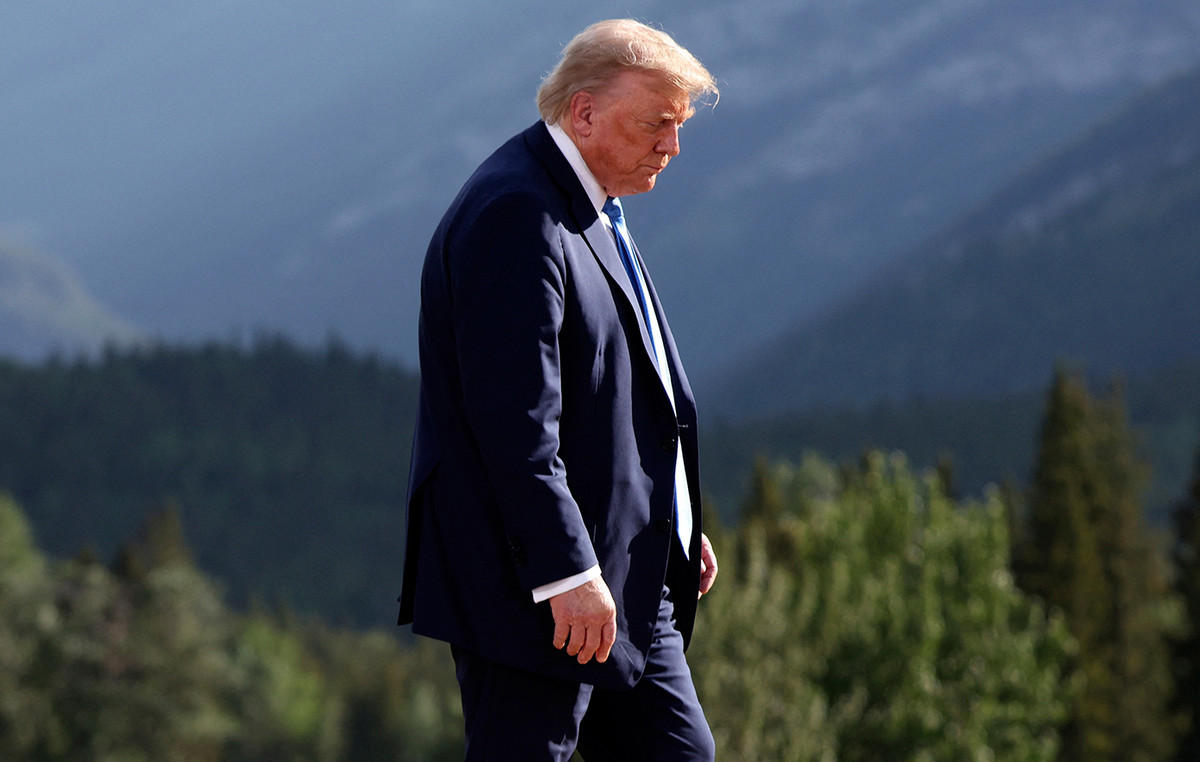- The US Dollar is trading mixed on Friday, with some profit taking after another fierce week.
- The focus will be on the US PMI numbers.
- The Dollar Index is approaching six-month highs.
He US dollar (USD) rose strongly again on Thursday, posting gains against almost all major G20 currencies. Supported by rising US yields, the Dollar is advancing in an environment where the rate differential appears to be the determining factor in determining which currency weakens and which appreciates. With the US 10-year yield reaching 4.51%, breaking above the October 2007 high, it appears the Dollar King is asserting its earned title.
This holiday could be tempered based on US Purchasing Managers’ Index (PMI) data due out later on Friday by S&P Global. The data will provide new insight into the state of the country’s main manufacturing and services sectors in September, after August data showed manufacturing activity fell into contraction and services posted very slight expansion…. If both Figures fall completely on the squeeze, expect long US dollar positions to be unwound over the weekend.
Daily summary: Dollar seeks confirmation in PMIs
- Strikes continue in the three main automotive proceedings with no positive headlines to report before this Friday’s deadline.
- There is also no progress reported on the imminent closure of the US Government.
- Traders will be watching the S&P Global Purchasing Managers’ Index (PMI) numbers around 13:45 GMT: the Manufacturing PMI is expected to rise from 47.9 to 48, while the Services PMI rebounds from 50.5 to 50.6 . The composite PMI, which measures the results of manufacturing and services, will also not experience significant changes, around the previous 50.2.
- The US Baker Hughes oil rig count will be published at 17:00 GMT. The previous figure was 515. Energy remains a weak point in the inflation bag that the Fed cannot control to get inflation back to 2%. Given that Baker Hughes Rig Count numbers have remained very low in recent months, a US energy deficit could persist through the winter, pushing up energy prices even further.
- Great dispersion in the stock markets: The Japanese Nikkei and Topix are in the red, with a decrease of 0.50%. In China, both the Hang Seng and the CSI 300 rose more than 1.50%. In Europe, stocks open flat, while US futures point to the green.
- CME Group’s FedWatch tool shows that markets are pricing in a 73.8% chance that the Federal Reserve will keep interest rates unchanged at its November meeting. The last rate hike is expected in December or January.
- The 10-year US Treasury yield was trading at 4.51%, the highest level since October 2007. It later fell again to 4.48%. The story of the rate differential remains the main driver of the foreign exchange market.
Dollar Index Technical Analysis: Getting Tired
It looks like the US Dollar will close the week with another positive data on the Dollar Index (DXY). The Dollar has once again confirmed its kingly status, although the price action appears to be tiring. This afternoon’s PMI numbers will be crucial to seeing a final attempt at a new yearly high or rather a pullback to 105.00 or lower.
The Dollar Index (DXY) is moving sideways after reaching 105.68 on Thursday. If the DXY closes above the annual high near 105.88, it is expected that the Dollar will continue with more bullish movements in the medium term. US yields will remain crucial to support current DXY levels.
On the downside, the 104.44 level seen on August 25 maintained support for the index on Monday, preventing further selling of the DXY. If the rally started on September 12 were to reverse and 104.44 were to give way, there could be a major pullback to 103.04, where the 200-day SMA comes into play as support.
US Dollar FAQ
What is the US Dollar?
The United States dollar (USD) is the official currency of the United States of America, and the “de facto” currency of a significant number of other countries where it is in circulation alongside local banknotes. According to 2022 data, it is the most traded currency in the world, with more than 88% of all global currency exchange operations, equivalent to an average of $6.6 trillion in daily transactions.
After World War II, the USD took over from the pound sterling as the world’s reserve currency. For most of its history, the US dollar was backed by gold, until the Bretton Woods Agreement of 1971, when the gold standard disappeared.
How do the decisions of the Federal Reserve affect the Dollar?
The single most important factor influencing the value of the US dollar is monetary policy, which is determined by the Federal Reserve (Fed). The Fed has two mandates: achieve price stability (control inflation) and promote full employment. Your main tool to achieve these two objectives is to adjust interest rates.
When prices rise too quickly and inflation exceeds the 2% target set by the Fed, the Fed raises rates, which favors the price of the dollar. When Inflation falls below 2% or the unemployment rate is too high, the Fed can lower interest rates, which weighs on the Dollar.
What is Quantitative Easing and how does it influence the Dollar?
In extreme situations, the Federal Reserve can also print more dollars and enact quantitative easing (QE). QE is the process by which the Fed substantially increases the flow of credit into a clogged financial system.
This is an unconventional policy measure used when credit has dried up because banks do not lend to each other (for fear of counterparty default). It is a last resort when a simple lowering of interest rates is unlikely to achieve the necessary result. It was the Fed’s weapon of choice to combat the credit crunch that occurred during the Great Financial Crisis of 2008. It involves the Fed printing more dollars and using them to buy US government bonds, primarily from financial institutions. QE usually leads to a weakening of the US dollar.
What is quantitative tightening and how does it influence the US dollar?
Quantitative tightening (QT) is the reverse process by which the Federal Reserve stops purchasing bonds from financial institutions and does not reinvest the principal of maturing portfolio securities in new purchases. It is usually positive for the US dollar.
Source: Fx Street
I am Joshua Winder, a senior-level journalist and editor at World Stock Market. I specialize in covering news related to the stock market and economic trends. With more than 8 years of experience in this field, I have become an expert in financial reporting.







